Natural Water Sanctuary Kyoto Nishiyama
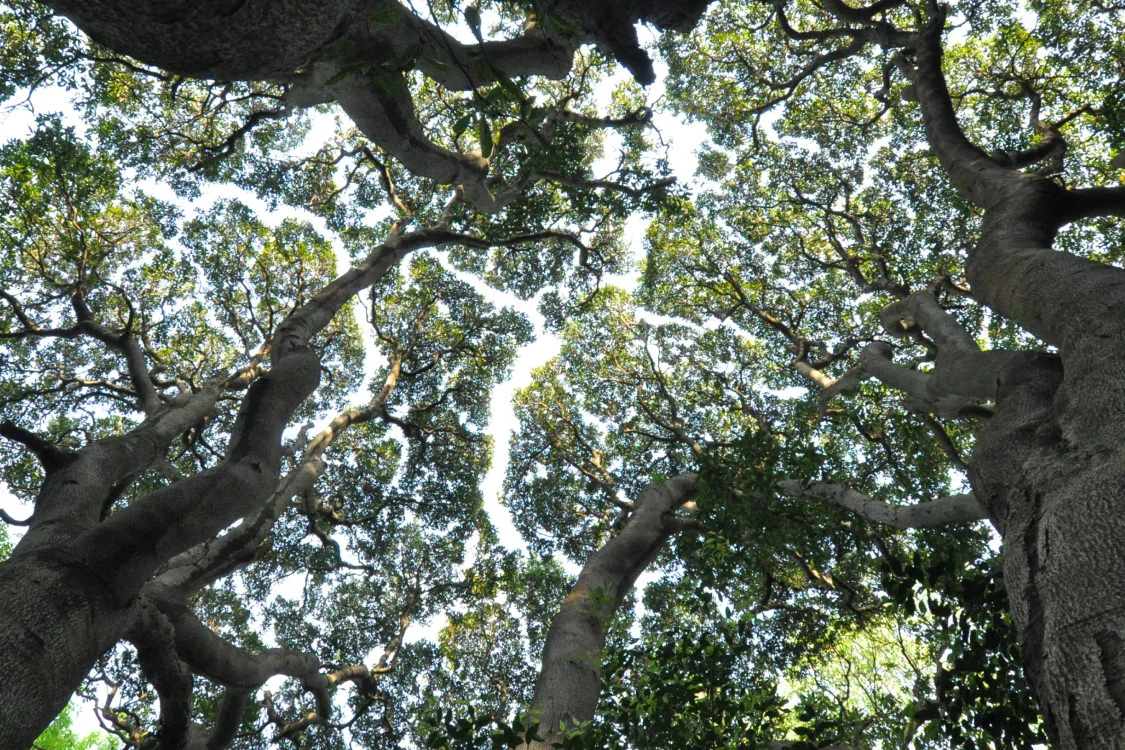
This Sanctuary is located in the water-source conservation area of Kyoto Brewery operated by Suntory Spirits Ltd.
This page explains the initiatives of our Natural Water Sanctuary Kyoto Nishiyama.
- Agreement start date
- March 2012
- Area
- About 193 ha
- Applicable plant
- Kyoto Brewery, Suntory Spirits Ltd.
Measures Against Oak Withering
In many neglected satoyama (traditional woodland landscapes), a phenomenon known as oak withering has been spreading. This causes oak trees to wither and die, with their leaves turning red even before autumn arrives. Like other Japanese forests, our Natural Water Sanctuary Kyoto Nishiyama is vulnerable to this disease.
Oak withering is caused by an insect known as the oak ambrosia beetle. When the beetle bores holes in trees to lay its eggs, it introduces a fungus known as the oak wilt fungus (Raffaelea quercivora), which ultimately kills the tree.
At the base of trees affected by oak withering, you can often see sawdust expelled by the beetles as they bore into the wood.
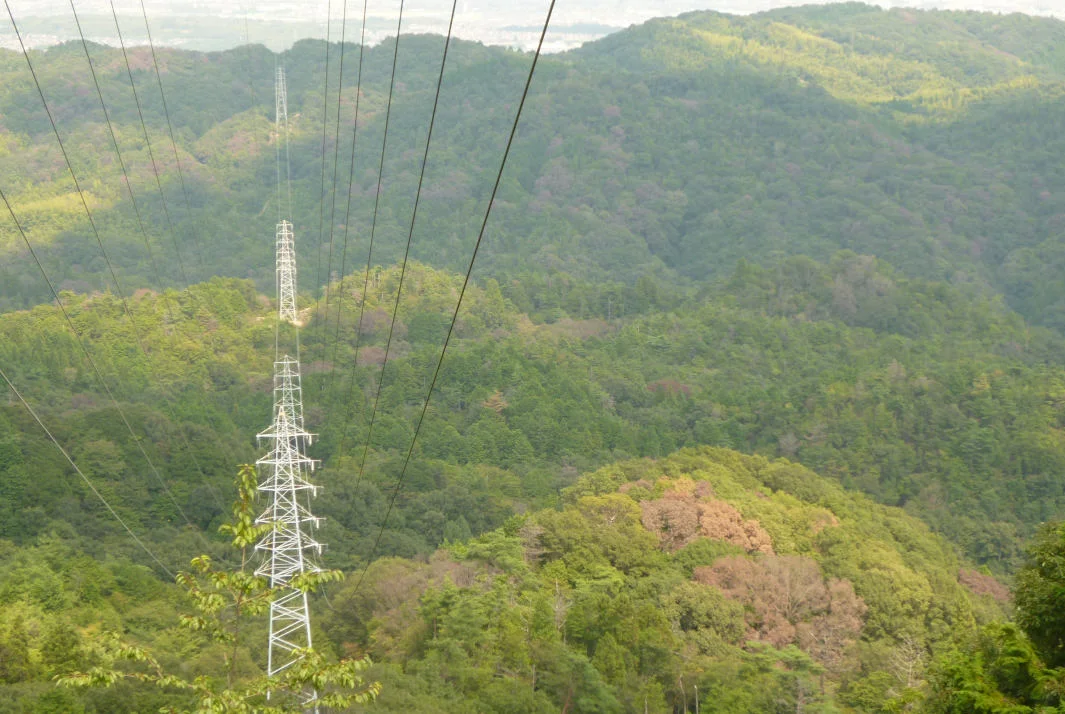
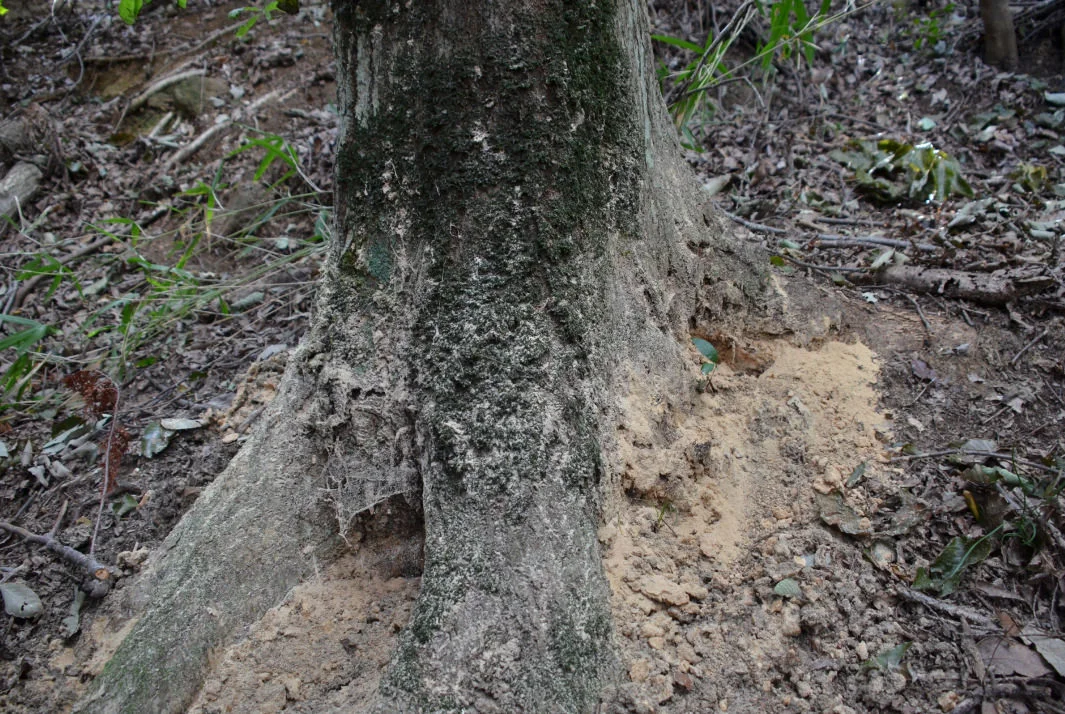
However, the beetle alone cannot be blamed. In the past, these beetles played an important role by causing mature konara oaks to die and helping to rejuvenate the forest.
However, due to the adoption of modern energy sources like gas and electricity, people stopped managing Japan’s traditional konara oak forests, which were originally used for firewood and charcoal. This resulted in an overabundance of large, mature konara oak forest stands that have now become ideal feeding grounds for the ambrosia beetle.
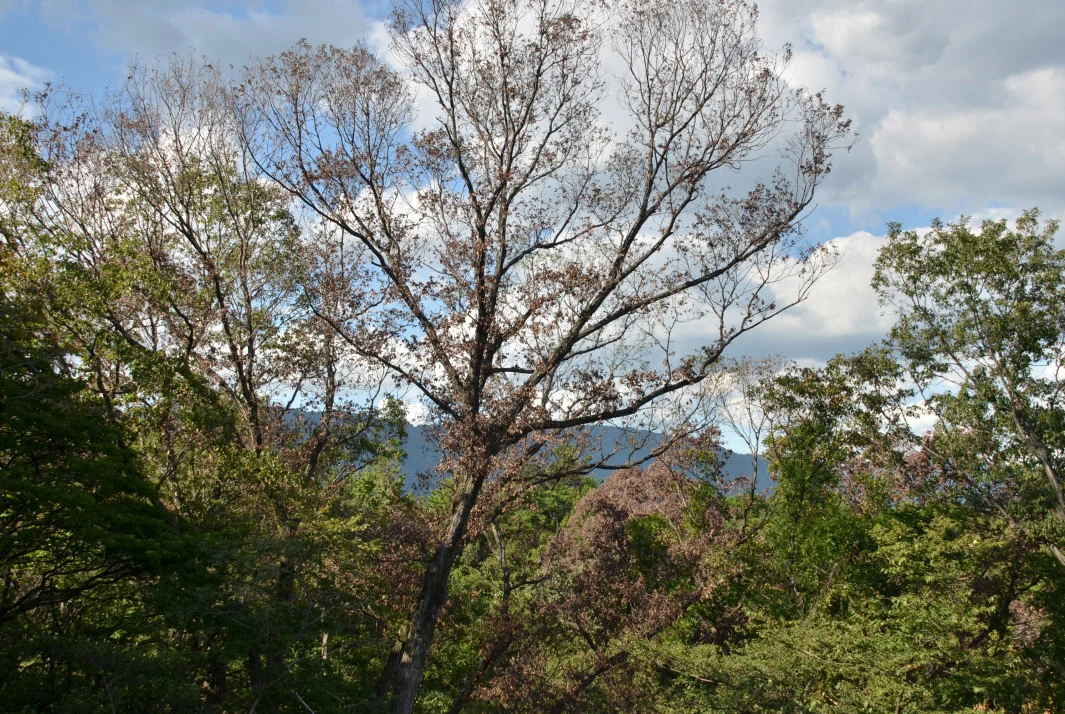
As an early-stage countermeasure, we wrap infected trees with special adhesive sheets with the sticky side facing inward. These sheets trap newly emerged adult beetles exiting from their holes, helping to control the spread of the infection.
Our ongoing surveys suggest that the damage from oak withering has affected about 30–40% of the konara oak population. So at this point, we don’t expect all konara oaks in the sanctuary to die off. We will continue monitoring and implementing pest control measures as needed.
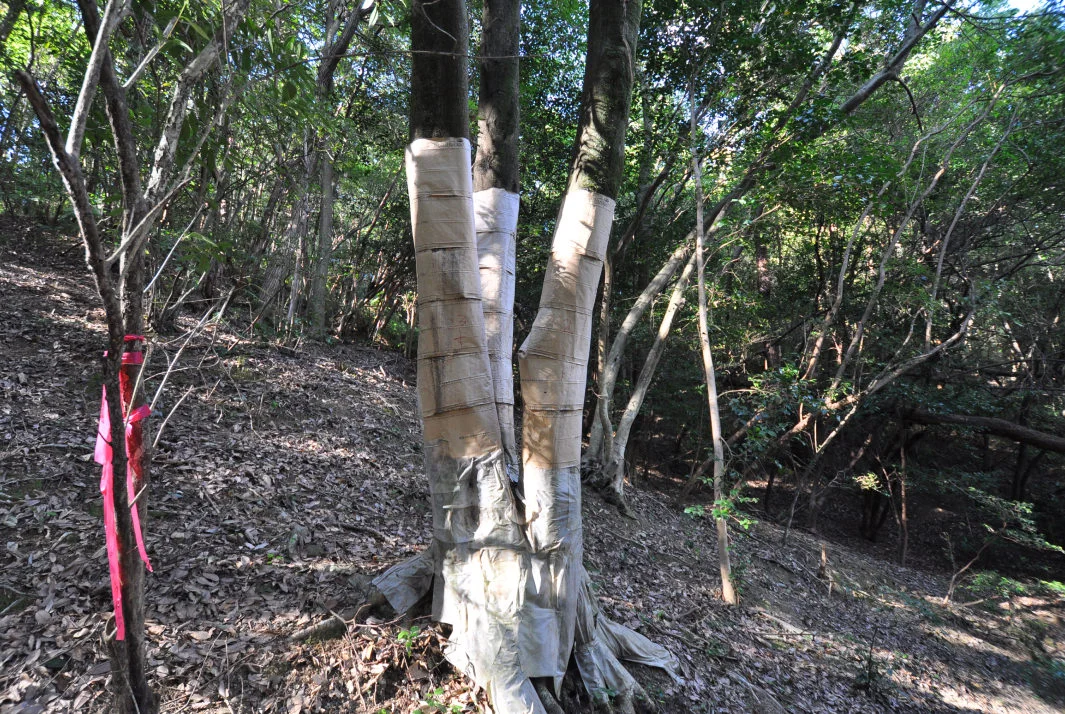
The photo below shows a fungus called poison fire coral. It often appears near the base of withered konara or Japanese Oak trees. As oak withering spreads, sightings of this mushroom have become more common. It is an extremely poisonous mushroom, dangerous even to touch—so please be cautious if you ever encounter it.
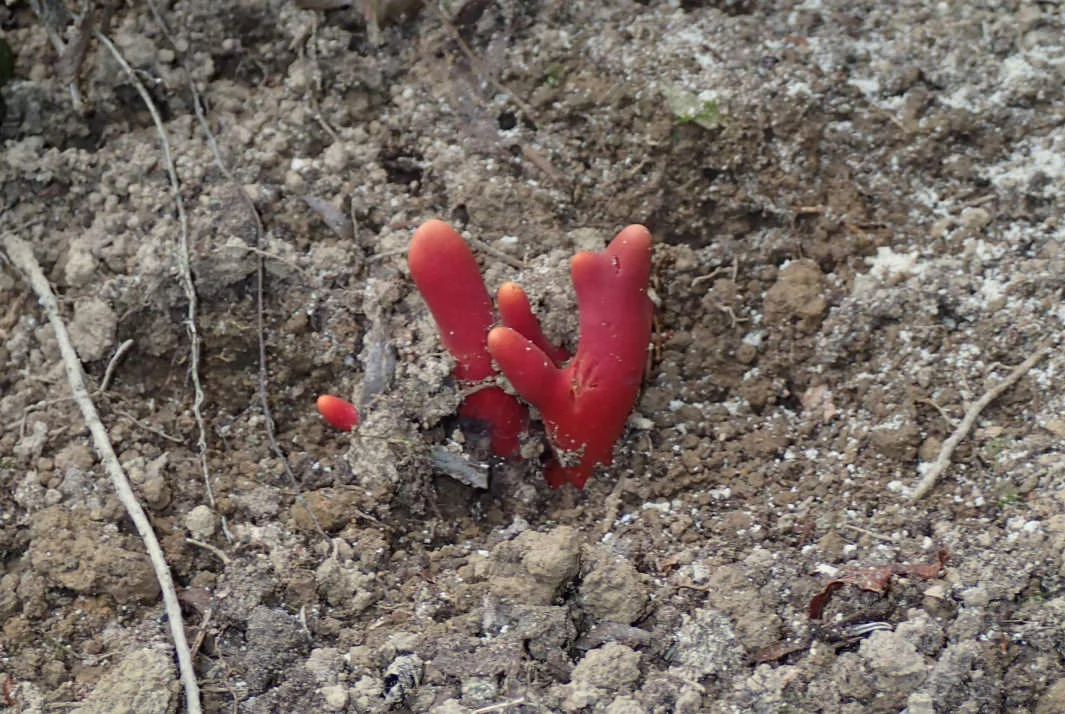
Experts involved in this Initiative
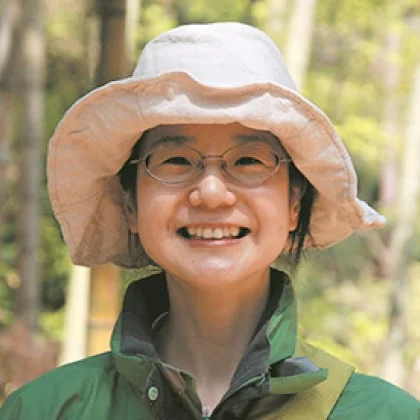
Naoko Tokuchi
Professor, Kyoto University
Recovery from Typhoon Damage
In September 2018, Typhoon Jebi made a direct hit on the Kansai region of Japan. Its powerful winds caused severe damage to our Natural Water Sanctuary Kyoto Nishiyama, leaving behind fallen trees and landslides.
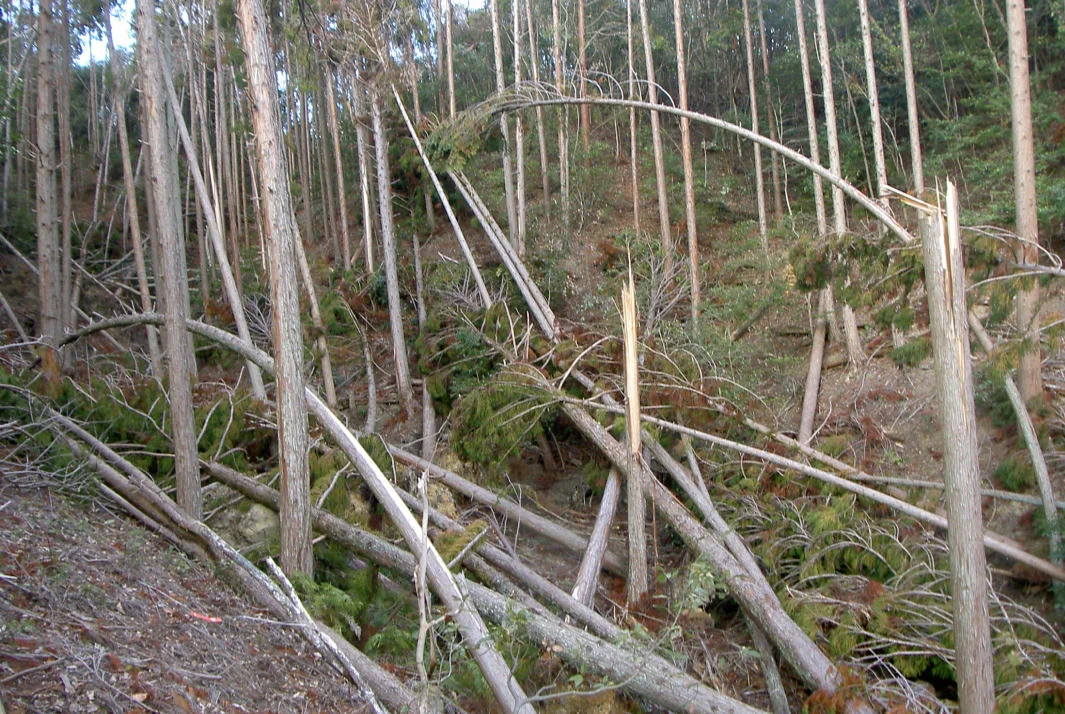
We surveyed the hardest-hit areas and prioritized the processing of fallen trees—such as repurposing them as erosion barriers. These measures helped to prevent further landslides and other secondary damage.
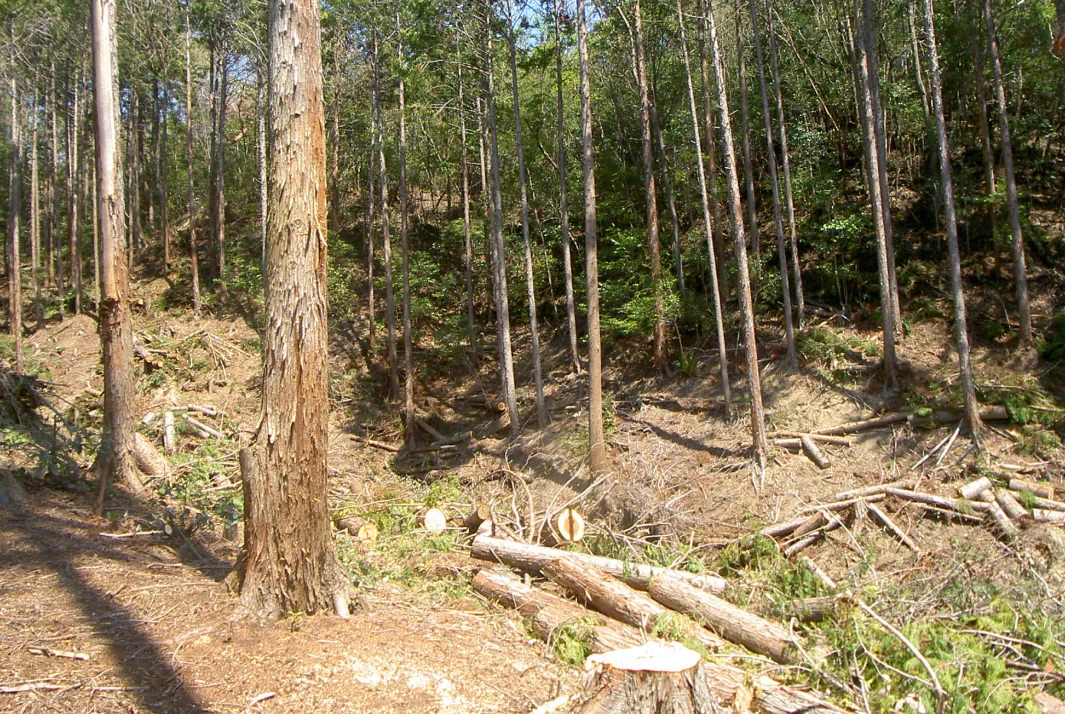
Products Related to Natural Water Sanctuary Kyoto Nishiyama
The high-quality groundwater nurtured by our Natural Water Sanctuaries, such as Natural Water Sanctuary Kyoto Nishiyama, is used in Suntory beer products, including The Premium Malt’s. We provide products that prioritize both exceptional taste and uncompromising safety, harnessing the gifts of nature in their original form.

Sanctuary Details
- Location
- Okukaiinji, Nagaokakyo City, Kyoto Prefecture
- Area
- About 193 ha
- Agreement date
- March 2012 (sanctuary has gradually expanded since then)
- Agreement period
- 30 years
Under the framework of the Nishiyama Forest Maintenance Promotion Council, part of the Kyoto Model Forest Association’s initiatives, the Nagaokakyo City Forestry Cooperative served as an intermediary for multiple landowners. Suntory entered into a forest management agreement with the Forestry Cooperative and Nagaokakyo City.
See the list of Natural Water Sanctuaries across Japan
 Home
Home Initiative Policy and Structure
Initiative Policy and Structure Living Things in the Natural Water Sanctuaries
Living Things in the Natural Water Sanctuaries Dedication to Water
Dedication to Water Natural Water Sanctuaries
Natural Water Sanctuaries  Natural Water
Natural Water  Initiative History
Initiative History